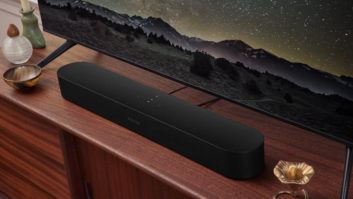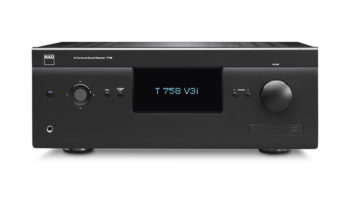“The client doesn’t need the latest and greatest right now. They want to wait to upgrade later when prices go down.” This, or some equivalent, is an oft-stated introduction on new projects. This sentiment seems to be most frequently expressed when it comes to video. With the advent of 4K projection–and its game-changing level of performance and many design considerations affected by proper specification–this thinking is less advisable than ever.
Image Resolution
The staggering increase in pixel count is similar to what we experienced when HD came on the scene. Try to remember the first time you experienced 1080p. 4K is that good. You can’t go back. Even if one were to view a black and white film in 4K, the experience would be transformative. But resolution is only the beginning.

High Dynamic Range (HDR)
Previously, display technology supported about 36 percent of the colors visible to the human eye. When fully realized, HDR will provide about 76 percent. We are currently seeing content that supports somewhere around 50 percent. Nonetheless, this is a significantly improved experience. Many feel that HDR is even more dramatic than the increased pixel count of 4K or Ultra HD. But, those additional pixels actually add to the benefits of the increased color space. The subtlety of color differences and gradation of colors possible with 4K provide a level of realism that, once experienced, leaves lesser images comparatively flat.
Color Volume
Not only do the increased quantity of colors benefit from the greater pixel count of 4K and Ultra HD but also the brightness of those colors. This goes beyond the mere light output specifications of a display but speaks to how bright the available colors are being rendered. The increased color volume promised by HDR along with the emerging color standards would not be possible without 4K or Ultra HD resolution.
Big Picture
It wasn’t that long ago that the industry standard was for the viewing position in a private theater to be at around a 30 to 35 degree horizontal viewing angle or about three screen heights. Calculated for a 10-foot-wide, 1.78:1 HDTV screen, that means that your seats would be at about 17 feet from the screen! Or, your screen would need to be much smaller. 4K or Ultra HD, however, supports a 1.5 screen height setback or roughly 58 degrees. This means that a 10-foot screen can support viewers at about 100 inches (make sure the screen material supports such proximity, now more a concern than the image resolution). Suddenly, the immersive quality of the visual experience can be comparable to the big-screen experience that the movies were intended to provide. And, more people can be in good seating positions in a theater room.
The Problem with Compromise
Performance has a price, of course, and consumers and providers often look for loopholes. For instance, providers have taken the label of 4K and Ultra HD and added the qualifier “capable” to them, meaning that they can accept 4K or Ultra HD content and project an image that’s smaller than 2160p. These devices are using any number of methodologies to modify the content to project an image.
On the consumer side, this is where the phenomena of home theater design procrastination can strike. All projectors have unique characteristics, including zoom capability, offset capacity, ventilation requirements, etc. Each of these must be considered and accommodated in the design. Unless a room has a dedicated projection booth with an oversized port, it is likely the installation environment produced to house the “temporary” projector will not accommodate the higher performance projector of the future.
If the project is to have a digital cinema (True 4K) projector sometime in the future, it is vital the room and projector housing be designed for these criteria from day one. Generally, consumer-grade products will fit into many different room situations, sometimes at the expense of performance. The manufacturers want to sell a lot of them and do not want many limiting criteria. Whereas the performance-oriented products are designed to deliver as high a level of performance as their design criteria, and will likely require the space to be optimized for such performance. The result of these divergent philosophies is that a performance-engineered projection system cannot be retrofit into a consumer theater without significant reconstruction, if at all.
In what other industry are such half measures accepted? Would you purchase a fine automobile, expecting to change the power plant out next year? Consider this from another perspective: would a car manufacturer allow a client to purchase an under-powered vehicle with the idea they would love it enough to put the right engine in later?







